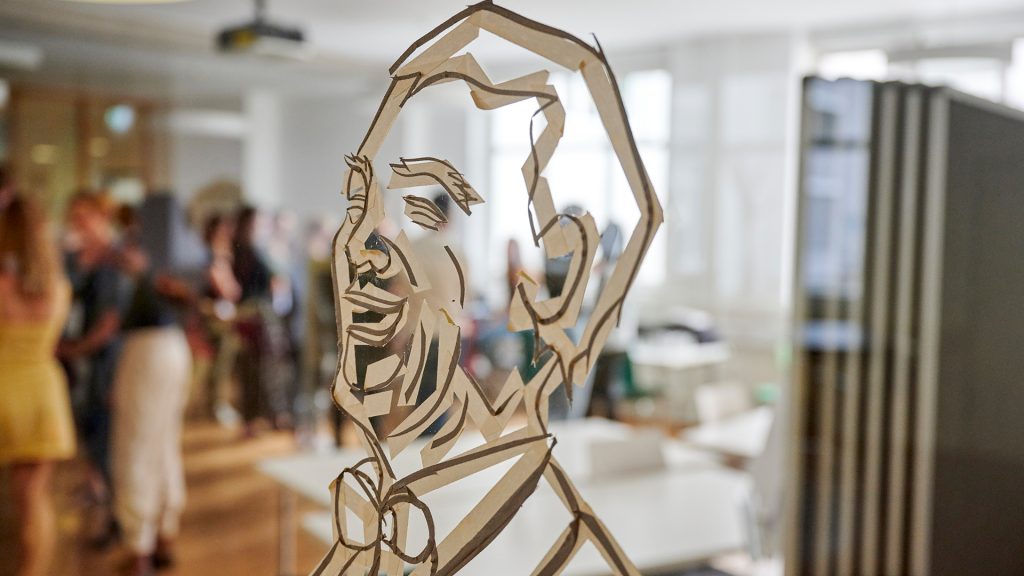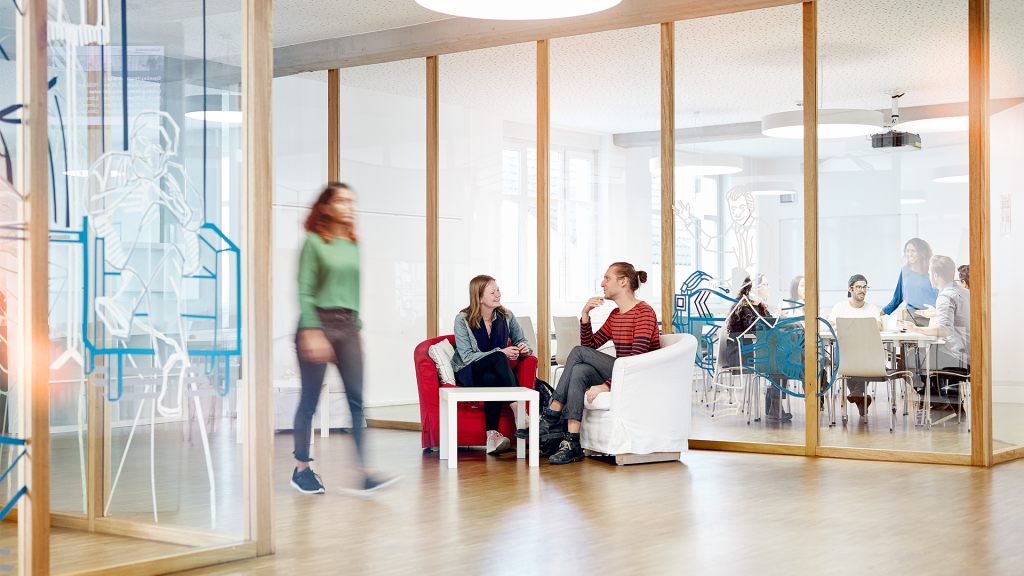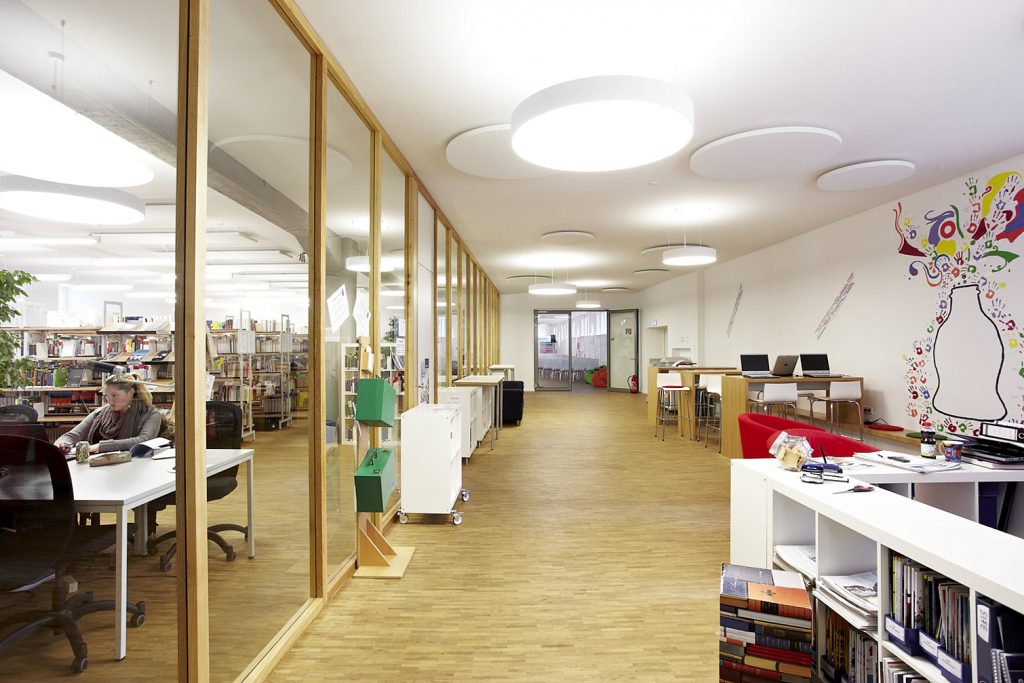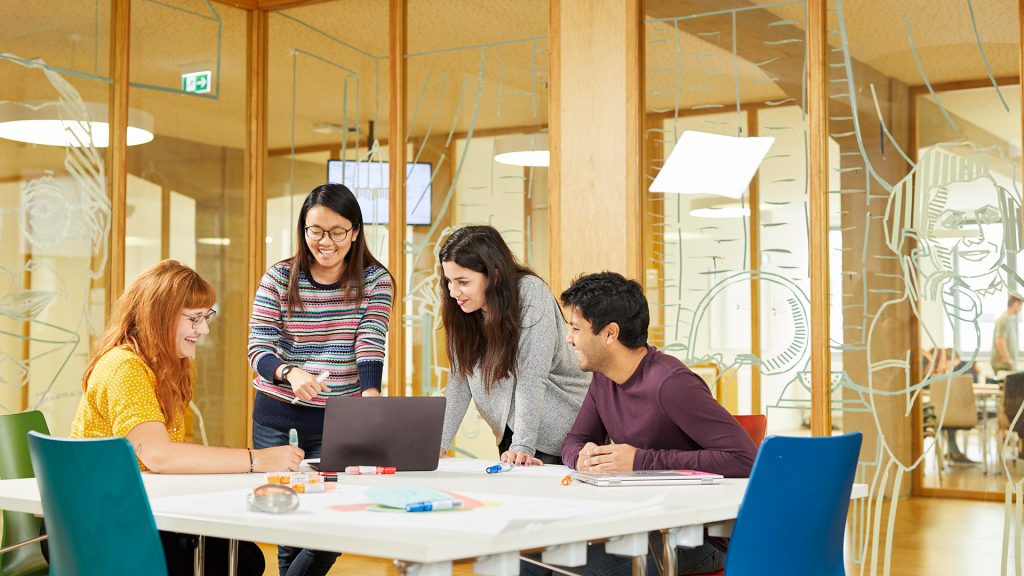Where architecture, values, and learning meet
Are you aware of how much of your surroundings influence your mood and actions? The way buildings are designed, furniture is chosen, walls are painted, and rooms are displayed can affect our behavior in predictable – but sometimes unexpected – ways.
The goal of architecture is to create an environment that facilitates the development of a specific human potentiality. You might visualize a senior home having a calm atmosphere, with soft colors and beautiful gardens, which produces a feeling of tranquility. Similarly, fast-food chains usually have harsh colors in order to influence customers to order and leave as soon as possible. We can picture hospitals, stadiums, and malls quite accurately as each location is designed to be harmonious with its purpose.

These human constructs are replete with architectural images that shape our psyche — safety, danger, joy, and anxiety — as well as a full range of other emotions that can be predisposed by the arrangement of space. In that sense, how do we perceive the ideal atmosphere and attributes for an educational institution? What kind of feelings are conveyed at our university?
Karlshochschule – it is unlike any other university
When you first enter Karlshochschule, you realize it is unlike any other university. Karls never wanted to be like any other business university – therefore it was not designed to be that way. For instance, at Karls, the value placed in cooperation can be seen in all the co-working spaces, group tables, and how you can spontaneously meet up in the playspace or use the terrace to work with peers.

However, the most distinctive aspect representing Karls’ ideals is precisely the transparent walls. The motto that here you can “see through things” is indeed literal. Instead of predictable concrete walls, which are present in most educational institutions, here every room can be seen from outside. You can tell if people are working, studying, having a chat, or simply taking a break. You can see how they act, and even if they feel bored or excited.
But what value truly lies behind – or inside – Karls’ walls?
The apparent explanation lies in the concept of transparency: to be able to show who you are, to have the insider and outsider’s perspective, to be open-minded. At the same time, when there are transparencies, there are also exposures: mistakes can be seen and pointed out. Those are the values which Karls is based on, that’s exactly what we want: to be as clear as possible. The feedforward events and feedback boxes available around the university are there to illustrate the same thing. Borders, walls, and limits have to be made visible in order to be mindfully crossed.

As time goes by, the people that habit in the place also influences the environment based on their mood, behavior, and preferences. You can easily imagine the room of a teenager being messy and cluttered, representing their roller-coaster of emotions. The same happened to our walls. For the Touring Consumption Conference in 2013, Isabella Blatter, Moritz Wittkamp, and Hauke Pflüger livened up space by creating artwork with strips on the walls. The initial arrangement was the sketches of cities and landscapes. According to its authors, the idea behind the elements leads to the philosophy of the university and its diverse perspective approaches, every visitor of the tape art exhibition could have their own interpretations.
The tape art project was so notorious that it became a movement, and tapes still decorate the walls of the second floor. Nowadays, the exhibition is called “Gallery of Thinkers”, where famous thinkers that influenced Karlshochschule are displayed. The bright minds can be seen doing mundane activities, and we are invited to reflect on what they might be wondering about.

Besides concrete walls, there is a world of new possibilities, meanings, interpretations, and designs. In the real world, values can take place in a physical form. Our morals do not need only to be said, but to be felt, embraced, and lived. After all, our values, perceptions, and feelings are exposed around us, as solid and yet as transparent as a wall.
Written in 2021 by Celinne de Paula – Marketing & Communications
- Design psychology in action. (n.d.). AIA. www.aia.org/articles/1631-design-psychology-in-action:31
- Ehmann, S., & G.S.G. (2012). Learn for Life: New Architecture for New Learning (First Edition). gestalten.
- Zifferblatt, S. (1972). Architecture and Human Behavior: Toward Increased Understanding of a Functional Relationship. Educational Technology, 12(8), 54-57. Retrieved November 18, 2020, from http://www.jstor.org/stable/44418593